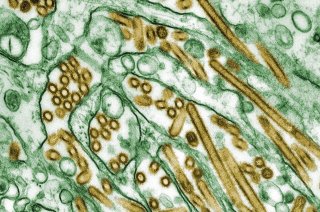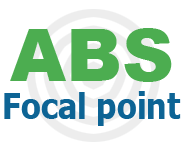
Pandemic Influenza Preparedness Framework
The Pandemic Influenza Preparedness (PIP) Framework is an international instrument that aims to improve pandemic influenza preparedness and response by establishing a system for 1) the global sharing of H5N1 and other influenza viruses with human pandemic potential and 2) access to vaccines and sharing of other benefits. It was negotiated by Member States of the World Health Organization (WHO) and entered into force on 24 May 2011.
The PIP Framework and the Global Influenza Surveillance and Response System (GISRS)
To fight pandemic influenza, the World Health Organization (WHO) coordinates since 1952 a global network to monitor the evolution and spread of Influenza viruses and respond to outbreaks. This Global Influenza Surveillance and Response System (GISRS) is an international network of laboratories that exchange influenza virus samples, conduct risk assessments and monitor the evolution of seasonal influenza activity as well as the pandemic potential of novel influenza viruses, and recommend risk management measures, including vaccines. Materials and information developed by the GISRS are used by vaccine manufacturers to produce vaccines.
The PIP Framework improves and strengthens the GISRS by establishing a global multilateral system for Access and Benefit-Sharing (ABS) regarding potential pandemic influenza materials (in the spirit of the Nagoya Protocol). For exchange of biological material within the GISRS, designated non-profit influenza laboratories (mostly National Influenza Centres) must register at WHO and sign a Standard Material Transfer Agreement 1 (SMTA1). Parties outside the GISRS, for example vaccine manufacturers, must sign the Standard Material Transfer Agreement 2 (SMTA2) as well as sign up and pay an annual donation to the Partnership Contribution Mechanism in exchange for receiving biological material. This is to ensure that benefits arising from access to these materials are shared through WHO to support outbreak response. The yearly revenues are used by WHO for building preparedness and response projects in low-capacity countries. Additionally, the PIP Framework helps to facilitate efficient and equitable access to vaccines and other pandemic-related countermeasures at the time of a pandemic. The PIP Framework itself is a nonbinding agreement adopted by all member countries of the WHO; SMTA1 and SMTA2, however, are legally binding documents.
The scope of the PIP Framework
The PIP Framework applies to H5N1 and other influenza viruses with human pandemic potential, but not to seasonal influenza viruses or other non-influenza pathogens or biological substances that may be contained in clinical specimens shared under the Framework.
Non-influenza pathogens may be shared on an ad hoc, bilateral basis where conditions of access are agreed to by the two parties. Pathogens may also be shared through biobanks or other global or regional networks of institutions and researchers using a material transfer agreement (MTA) or memorandum of understanding (MoU). For example, polioviruses are shared through the Global Polio Laboratory Network (GPLN). These networks are not part of the PIP Framework and are therefore not covered by SMTA1 or SMTA2. The sharing of pathogens outside the PIP Framework may be within the scope of the EU ABS Regulation.
Genetic Sequence Data (GSD) derived from influenza viruses with human pandemic potential are included under the PIP Framework, but not included in the definition of PIP Biological Materials (PIP BM). Access to physical viruses (PIP BM) requires signing an SMTA2 and is linked to payment of the Partnership Contribution, but access to GSD is only linked to payment of the Partnership Contribution. This means that sharing of the benefits from the use of GSD is not prescribed by SMTA-2, but it is considered to be covered through the annual Partnership Contribution Laboratories signing the SMTA-1 have to share any produced GSD into publicly accessible databases (GISAID or INSDC).
The PIP Framework and the Nagoya Protocol
The PIP Framework is not yet recognised as a specialised international access and benefit-sharing instrument under the Nagoya Protocol, as the criteria for recognition of these instruments are still under discussion. In the future, the PIP Framework may be accepted as a specialised instrument. In that case, genetic material acquired under both SMTA1 and SMTA2 will fall outside the scope of the Nagoya Protocol.
In the EU ABS Regulation (EU Regulation 511/2014), the PIP Framework is recognised as a specialised international ABS instrument (preamble 16). This means that material covered by the PIP Framework does not fall within the scope of the EU ABS Regulation.
